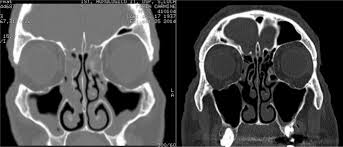16 June 2025 | Monday | News

Sanofi and Regeneron Pharmaceuticals, Inc. presented positive results from the EVEREST phase 4 study of adults with severe chronic rhinosinusitis with nasal polyps (CRSwNP) and coexisting asthma. In the study, Dupixent (dupilumab) outperformed Xolair (omalizumab) on all primary and secondary efficacy endpoints of CRSwNP, and in all asthma-related endpoints. The data are from the first-ever presented head-to-head respiratory study with biologic medicines and were shared today in a late-breaking oral presentation at the 2025 European Academy of Allergy and Clinical Immunology (EAACI) Annual Congress, Glasgow, UK.
Eugenio De Corso, MD, PhD
ENT Specialist, Otolaryngology, Head and Neck Surgery, Rhinology, A. Gemelli University Hospital Foundation, IRCSS, Rome, Italy, and lead investigator of the study
“Patients suffering from chronic rhinosinusitis with nasal polyps often live with the constant obstruction of their nasal passages that can lead to burdensome nasal congestion and loss of smell. What’s more, a majority of these individuals also have asthma that can substantially impact their quality of life. EVEREST is the first-ever trial to demonstrate the superiority of Dupixent over Xolair on CRSwNP endpoints in patients with coexisting asthma, along with generally similar safety profiles. Together, these Dupixent outcomes provide important insights that will help guide patients and physicians through the treatment decision-making process.”
In the EVEREST study, 360 adults with severe, uncontrolled CRSwNP and coexisting asthma were randomized to receive Dupixent 300 mg (n=181) every two weeks or a weight- and immunoglobulin E (IgE) level-based dosing regimen of omalizumab (n=179) every two or four weeks. Both Dupixent and omalizumab were added to background mometasone furoate nasal spray (MFNS).
Primary and secondary endpoint results in CRSwNP for patients treated with Dupixent compared to omalizumab at 24 weeks were as follows with differences were seen as early as four weeks:
Asthma endpoint results for patients treated with Dupixent compared to omalizumab at 24 weeks were as follows, with differences seen as early as four weeks:
The safety results in the EVEREST study were generally consistent with the known safety profile of Dupixent in its approved respiratory indications, with similar overall rates of adverse events (AEs) observed between Dupixent (64%) and omalizumab (67%). Serious AEs were reported in 2% and 4% of patients treated with Dupixent and omalizumab, respectively. Additionally, AEs leading to study discontinuation were reported in 3% of Dupixent patients and 1% of omalizumab patients.


© 2025 Biopharma Boardroom. All Rights Reserved.